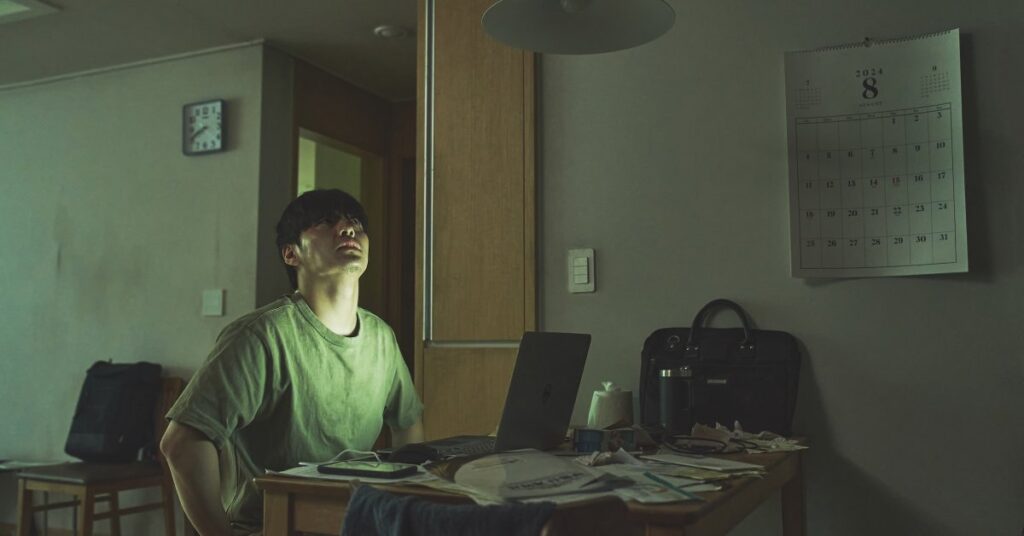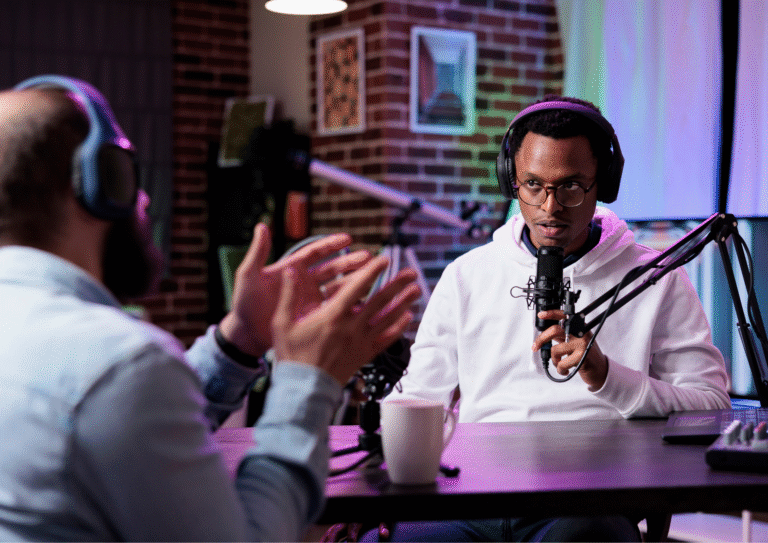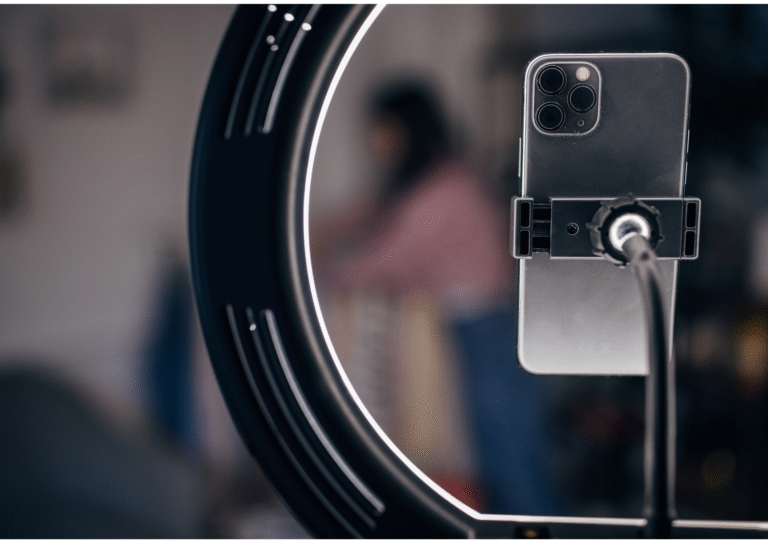
Have you seen online videos where someone pulls a mean prank and then says, “It was just a social experiment”? Learn why viewers don’t believe that excuse anymore and what risks creators take when they keep using it. Find out how this trend is breaking trust in online content.
What if the internet stopped giving second chances?
You’re scrolling, sipping your coffee, when you land on a viral clip: a guy smashing someone’s phone in public. The words on the screen say: “Social experiment. Just a prank, bro.”
But you don’t laugh.
You cringe. (This means you feel embarrassed or uncomfortable for the person in the video.)
Maybe you even scroll faster . , .
Because you’ve seen this too many times.
That’s the problem. Viewers today want authenticity. This means they want videos that are real, honest, and genuine. They want to see true human moments, not fake drama that’s followed by a lazy excuse like, “It was just a social experiment.”
And yet, creators still try to pass off hurtful or tricky content using this old excuse. Why do they do it? Because it worked once in the past.
But in 2025, no one’s buying it anymore. People are smarter now. And this article will explain why . , . while also showing what risks creators take when they keep playing this worn-out card. (Playing a “worn-out card” means using an old trick that no longer works.)
Why “Social Experiments” Matter More Than You Think
At face value, a social experiment sounds innocent. It sounds like something from a science class! It sounds like psychology (the study of the mind) or sociology (the study of how people live together in groups)! It sounds like it’s meant to create awareness (make people more knowledgeable about a problem).
Except . . . it’s often just a prank in disguise.
The term “social experiment” used to mean careful studies where people looked at how humans truly interacted with each other. They did these to learn important things about society. Now it’s code for:
- Upsetting strangers on purpose.
- Trying to get strong, shocking reactions from people.
- And making excuses or backing down when a lot of people complain about their video (this is called backlash).
Worse, some creators use it to justify behavior that is almost like harassment (repeatedly bothering or annoying someone) or trauma baiting (trying to cause someone emotional pain or upset just to get a reaction). And that’s what’s slowly eroding (wearing away) viewer trust in online content. People trust less and less what they see online.
As a 2023 Pew Research study (a study from a well-known research group) noted: “Trust in digital creators fell by 28% among viewers aged 18–34.” This means almost one-third fewer young adults trust online creators than they used to. This happened “largely due to repeated exposure to manipulative content disguised as ‘social experiments.’” [1] So, seeing too many of these fake experiments made people stop trusting creators.
But Some Say It’s “Just Entertainment”
Sure, let’s be fair. Some fans do defend these creators. They argue that:
- “It’s staged.” (This means it was planned, and everyone in the video was acting.)
- “Everyone was in on it.” (This means the people in the video knew it was a prank and agreed to be part of it.)
- “Nobody got hurt.” (This means no one was physically injured.)
And yeah . , . intent (what the creator meant to do) matters. Sometimes, pranks can be harmless fun that actually makes a point about society.
The “free hugs” guy? Sure. (This was a real “social experiment” where someone offered free hugs to strangers to see their reactions, and it was positive.)
The “racism experiment” where actors swap roles? That had real social impact. (This was a powerful video where actors switched roles to show how people reacted to racist behavior, truly making a point.)
But here’s where we call BS (a polite way of saying “nonsense”): Too many creators hide behind that excuse when things clearly go wrong.
For instance, when someone in a video is made to cry after being catfished (tricked by someone pretending to be someone else online) or humiliated (made to feel very embarrassed and ashamed), calling it a “social experiment” doesn’t magically undo the emotional damage. The hurt feelings are still real.
As one 2021 study in the Journal of Media Psychology found: “Viewers tend to respond negatively to pranks labeled as ‘social experiments,’ especially when they involve emotional manipulation or distress.” [2] This means that when pranks mess with people’s feelings or cause them pain, audiences don’t like it.
So while the creator may laugh it off, the audience increasingly does not.
Where It All Went Wrong: From Awareness to Exploitation
Back in the early 2010s, YouTube had channels that were genuinely trying to show social problems or challenge common ideas. They wanted to make people think.
But the landscape shifted. Things changed a lot. Clicks became currency. This means that getting lots of views and clicks became the most important thing because it could earn creators money. Shock value (doing something surprising or outrageous) won over sincerity (being real and honest).
As The Guardian’s 2017 article noted: “Many YouTube creators discovered that outrage (strong anger or shock) . , . even if fake . , . drives virality (meaning, it makes videos spread quickly and widely, becoming super popular), often at the expense of authenticity.” [3] So, creating fake anger or shock made videos popular, even if they weren’t real.
This shift blurred the line between a real “experiment” and exploitation. Exploitation means unfairly using someone or something for your own benefit. Instead of learning something new, viewers were watching strangers get traumatized (experience deep emotional shock or distress) just so someone could sell more merchandise (like T-shirts or hats with their logo).
In short, it stopped being about society and started being about monetization (which means making money from the videos).
Dark Humor Interlude (Don’t Worry . , . It’s Subtle)
Let’s be honest: if you call your video a “social experiment” but it involves screaming in an old lady’s face to see if she’ll cry . , . congrats, you’ve just graduated from YouTube University with a PhD in Jackassery. (That’s a humorous way of saying you’ve become an expert at being a jerk.)
The Role of TikTok and Instagram in Spreading This Trend
It’s not just YouTube anymore. In the TikTok age, where videos are super short and easy to share, it’s even easier to go viral (become popular very quickly) for the wrong reasons.
We’ve all seen it:
- A fake breakup happening in a public place.
- Stealing someone’s food “for social awareness.”
- “Accidentally” spilling coffee on a stranger.
The issue isn’t just the content . , . it’s the aftermath. (Aftermath means what happens as a result.) Creators often apologize, not because they truly regret what they did, but because their number of views started dropping. They lost popularity.
And apologies like, “I’m sorry if you felt offended . , . it was just a social experiment” only add insult to injury. (This means they make the person who was hurt feel even worse by acting like their feelings don’t matter or that the creator isn’t truly sorry.)
This Explainer on Social Experiments Shows Why Trust in Online Creators Is Rapidly Declining
Today’s audiences are more skeptical (meaning they question things more and are harder to fool), more informed, and have higher emotional intelligence (they understand feelings and how to manage them better).
We know when someone is faking sincerity (being truly honest). We know when something was planned out and scripted. We can feel the difference between a meaningful social test that genuinely teaches us something and content that’s just trying to trick us or get a reaction.
And unlike in the early days of the internet, viewers now have tools to fact-check (check if information is true), expose (reveal bad behavior), and hold creators accountable (make them responsible for their actions and mistakes).
The Way Forward: Authenticity, Not Excuses
If content creators want to regain trust, they need to ditch the “experiment” label unless they truly mean it. They need to stop using it as an excuse.
Instead:
- Be transparent about what’s staged. If something is fake or planned, tell your audience clearly. Don’t trick them.
- Don’t involve unwilling participants. Only include people in your videos who know they are being filmed and agree to be part of it. Don’t trick strangers.
- Focus on uplifting, not humiliating. Make content that makes people feel good or teaches them something, not content that makes others feel embarrassed or bad.
Social commentary (making comments or observations about society) can be powerful. But not when it weaponizes vulnerability. This means using someone’s weakness or emotional state against them for your own gain.
Final Thoughts: Your Next Step
Next time you see a video labeled “social experiment,” pause for a moment. Ask yourself:
- Who benefits from this? Is it the audience learning something, or just the creator getting views and money?
- Who’s being exploited (unfairly used) in this video?
- Is this awareness . , . or just another prank in disguise?
The more we, as viewers, demand authenticity (realness) and integrity (being honest and having strong moral principles), the less likely creators will hide behind tired labels that no longer fool anyone.
So scroll with purpose. Comment with awareness. And maybe . , . just maybe . , . don’t smash a stranger’s phone for clout (fame or influence).
References
- Pew Research Center. (2023). Public Trust in Digital Content Creators Continues to Decline. (This study from a well-known research group discusses how trust in online creators, especially among young adults, has dropped because of manipulative content.)
- Lavoie, J. A. A., & Main, K. (2021). YouTube prank videos and viewer empathy: Analyzing responses to social experiment labels. Journal of Media Psychology. (This research article found that viewers react negatively to pranks called “social experiments,” particularly when they involve emotional manipulation.)
- Solon, Olivia. (2017, March 21). How YouTube pranksters turned fake outrage into clicks. The Guardian. https://www.theguardian.com/technology/2017/mar/21/the-dark-psychology-of-social-networks-and-how-to-fix-it (This article explains how some YouTube creators learned that creating fake anger or shock could make their videos go viral, even if it meant sacrificing realness.)




